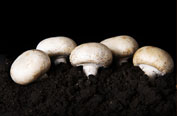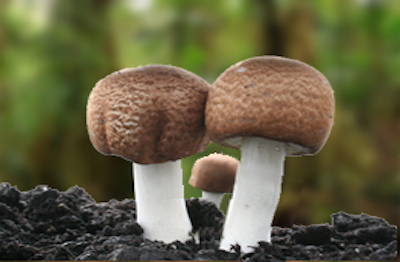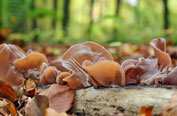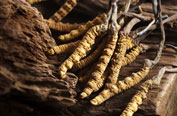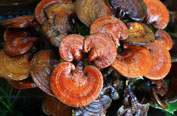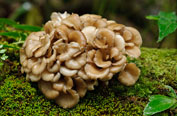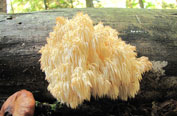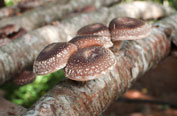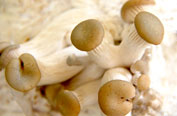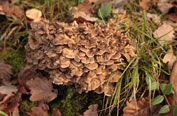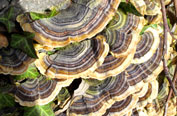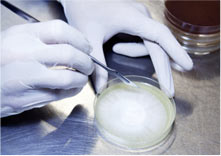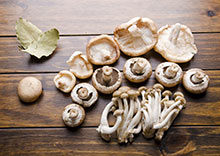
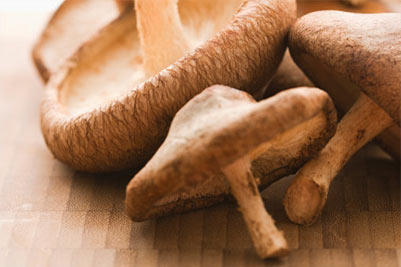
Types of Mycorrhizae and compatible Plants
Endomycorrhizal Plants: 90% of Plants - Mostly Green, Leafy Plants and most Commercially Produced Plants. Shrubs and foliage plants except for Rhododendron, Azalea, and Heath; Berries except for blue-berries, cranberries and lingonberries; Nut trees except pecan, hazelnuts and filberts. Flowers, Vegetables except Brassica and beets, cultivated grasses except weedy grasses; Fruit trees including tropical fruits; many wetland/aquatic species except rushes and horsetails.
Some of the commercially important plant groups that benefit from ENDO-mycorrhizal fungi:
Acacia, Agapanthus, Alder (Endo/Ecto), Alfalfa, Almond, Apple, Apricot, Artichoke, Ash, Asparagus Aspen(Endo/Ecto) Avocado, Bamboo, Banana, Barley, Basil, Bayberry, Beans,all Beech, Begonia, Black Cherry, Blackberry, Black Locust, Blue Gramma, Buckeye, Bulbs, all Cactus, Camellia, Carrisa, Carrot, Cacao, Cassava Ceanothus Cedar, Celery, Cherry, Chrysanthemum, Citrus, all Clover, Coconut, Coffee, Coral Tree, Corn, Cotton, Cottonwood (Endo/Ecto), Cowpea, Crab Tree, Creosote, Cryptomeria, Cucumber, Currant, Cypress, Dogwood, Eggplant, Elm, Eucalyptus, Euonymus, Fern, Fescue, Fig, Flax, Flowers, most, all Forsythia, Fuchsia, Gardenia, Garlic, Geranium, Grapes, all Grasses, perennials, Green Ash, Guayule, Gum, Hackberry, Hawthorn, Hemp, Herbs, all Hibiscus, Holly, Hostas, Impatiens, Jatropha, Jojoba, Juniper, Kiwi, Leek, Lettuce, Ligustrum, Lily, Locust, Lychee, Mahogany, Magnolia, Mahonia, Mango, Maples, all Marigolds, Mesquite Millet, Mimosa, Morning Glory, Mulberry, Myrtle, Nasturtium, Okra, Olive, Onion, Pacific Yew, Palms, all Pampas grass, Passion, Fruit Papaya, Paw Paw Peas, Peach, Peanut, Pear, Peppers, all Pistachio, Persimmon, Pittosporum, Plum, Podocarpus, Poinsettia, Poplar, Potato, Pumpkin, Raspberry, Redwood, Rice, Rose, Rubber, Ryegrass, Sagebrush, Saltbrush, Serviceberry, Sequoia, Shallot, Snapdragon, Sorghum, Sourwood, Soybean, Squash, Star Fruit, Strawberry, Succulents, Sudan Grass, Sugar Cane, Sumac, Sunflower, Sweet Gum, Sweet Potato, Sycamore, Taxus, Tea, Tobacco, Tomato, Violets, Wheat, Willow (Endo/Ecto), Yam, Yucca
Ectomycorrhizal Plants: 5% of Plants—Mainly Conifers & Oaks—more woody plants.
Some commercially important plant groups that benefit from ECTO-mycorrhizal fungi:
Alder (Endo/Ecto), Arborvitae, Arctostaphylos, Aspen (Endo/Ecto), Basswood, Beech, Birch, Chestnut, Chinquapin, Cottonwood (Endo/Ecto), Douglas fir, Eucalyptus, Filbert, Fir, Hazelnut, Hickory, Hemlock, Linden, Larch, Madrone, Manzanita, Oak, Pecan, Pine, Poplar, Spruce, Walnut, Willow (Endo/Ecto)
5% Form Other Relationship Types or are “Non-mycorrhizal”—The following Plants or Plant Groups “do not” respond to ENDO or ECTO Mycorrhizal fungi:
Brassica Family: Brussels, Broccoli, Cabbage, Cauliflower,Collards, Kale, Rutabaga
Ericaceae Family: Azalea, Blueberry, Cranberry, Heath, Huckleberry, Lingonberries, Rhododendron
Others: Beet, Carnation, Mustard, Orchids, Protea, Rush, Sedge, Spinach
Over 95% of the world’s plant species form with mycorrhizae and require the association for maximum performance in the field.

